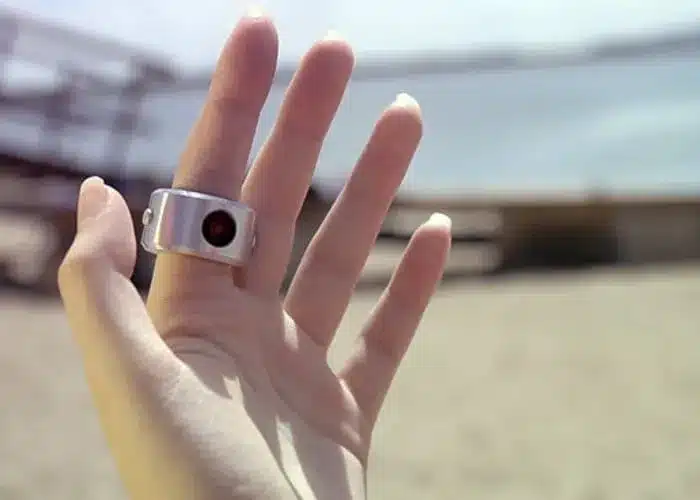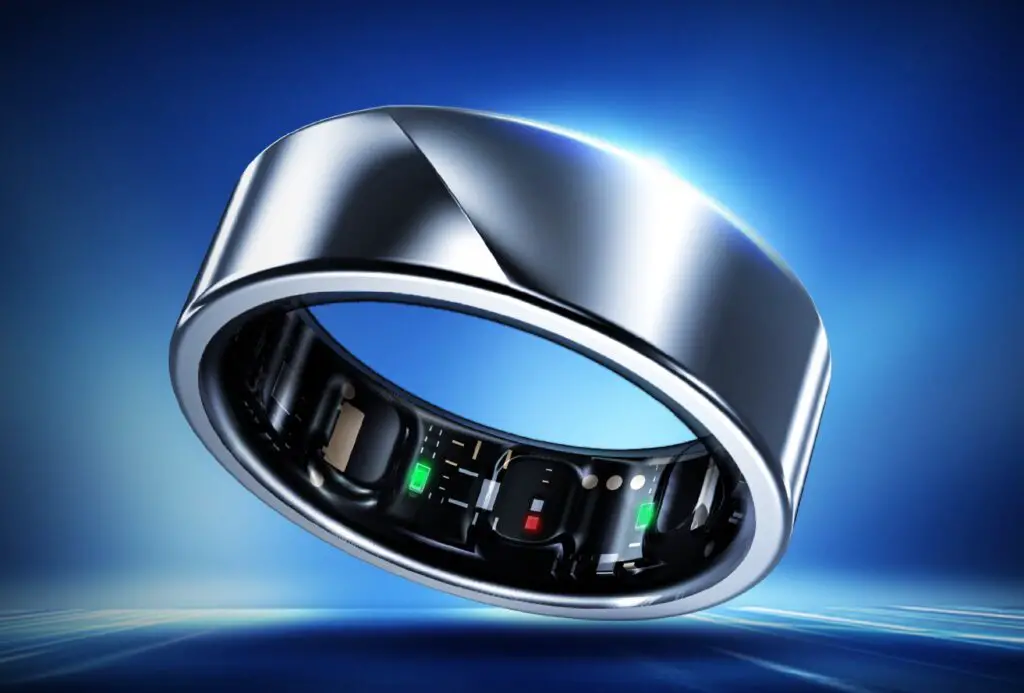Introduction
Ring cameras have revolutionized home security, providing homeowners with a powerful tool to monitor their property and enhance safety. While the ability to record video footage is a fundamental feature of Ring cameras, there are situations where users may wish to temporarily or permanently stop the camera from recording. Whether it’s to respect privacy concerns, conserve resources, or disable certain functionalities temporarily, knowing how to stop Ring cameras from recording can be valuable information for users seeking more control over their devices.
In this guide, we will explore various methods and options available to stop Ring cameras from recording. From temporary pauses to disabling recording completely, we will delve into the settings and functionalities offered by the Ring app, ensuring that users can navigate and customize their camera’s recording preferences with ease.
Firstly, we will cover how to activate “Privacy Mode,” a feature within the Ring app that allows users to halt recording and audio functions temporarily. Understanding how to enable and disable Privacy Mode will enable users to take breaks from recording when needed without compromising the camera’s overall functionality.
Next, we will discuss how to customize motion detection settings to stop the camera from triggering recordings for specific events or during certain hours. By adjusting motion sensitivity and setting up motion zones, users can ensure the camera remains idle when unnecessary recordings are unwanted.

Can I stop my Ring Doorbell recording?
You can completely disable the motion recording function on your Ring device by toggling off the Motion Detection control in your Ring app. On the device dashboard, toggle the Motion Detection slider to off. Tap Stop Recording.
Ring Doorbell from recording by using the “Privacy Mode” feature in the Ring app. Privacy Mode allows you to temporarily disable all video and audio recording on your Ring Doorbell. When Privacy Mode is activated, the Doorbell will not capture any new video or audio until you turn it off.
Here’s how you can enable Privacy Mode on your Ring Doorbell:
- Open the Ring app on your smartphone or tablet.
- Tap on the three horizontal lines (hamburger menu) in the top-left corner to open the main menu.
- Select “Devices” from the menu to view your connected Ring devices.
- Find and tap on your Ring Doorbell in the list of devices.
- In the Ring Doorbell settings, look for the “Privacy Settings” or “Privacy Mode” option.
- Enable the Privacy Mode by toggling the switch. You may need to confirm your selection.
Once Privacy Mode is turned on, your Ring Doorbell will stop recording new video and audio. However, you will still be able to access the live view feature and see real-time video from the camera.
It’s essential to remember that while Privacy Mode prevents new recordings, it does not delete or erase existing video recordings that were previously saved to the Ring cloud. The recorded videos will still be accessible in your Ring account.
Privacy Mode is useful when you want to temporarily suspend surveillance for privacy reasons or during times when you don’t need video recordings, such as when family members are home and don’t want to be recorded.
Is the Ring camera always recording?
Ring cameras do not constantly record and store footage of your property when you are not there. Instead, the camera system is set to record and store footage when any form of motion is detected. If you want continuously monitoring of your home, you must sign up for the company’s premium plan.
Ring cameras don’t always record. By only recording when particular triggers or events occur, Ring cameras save resources and storage space. This optimizes the camera’s functioning and ensures home security.
Ring cameras let users select motion detection sensitivity and zones in addition to recording triggers. These settings allow users to customize their camera’s functionality and reduce false motion alerts, ensuring that recording only occurs when necessary.
Scheduled recording is available on some Ring cameras. Motion detection and recording can be set for particular hours to help control camera operation and avoid needless recordings.
In order to protect user privacy and data, Ring selectively records just the most important events and respects users’ requests. These qualities make Ring cameras a viable home security system that gives users privacy and surveillance control.
Is there a way to turn off Ring camera?
Here is how to do so:
- Launch the Ring app.
- Tap the three lines in the left top-left corner of the handset screen.
- Tap ‘Devices’, then select all the devices you intend to disable.
- Tap the three dots in the top-right corner of the device’s image.
- Tap ‘Device Settings and scroll down to click ‘Disable Camera toggle.
Privacy Mode
One way to “turn off” a Ring camera is by using the Privacy Mode feature in the Ring app. Enabling Privacy Mode temporarily disables all video and audio recording on the camera. This can be useful when you want to suspend surveillance for privacy reasons or during certain times when you don’t need the camera to record.
Motion Detection
If you want to stop the camera from triggering recordings based on motion detection, you can adjust the motion settings in the Ring app. By customizing the motion sensitivity or creating motion zones, you can effectively reduce or disable motion-triggered recordings.
Live View
The live view feature allows you to see real-time video from your Ring camera. While you can’t “turn off” the live view permanently, you can simply exit the live view session in the Ring app when you no longer need it.
Device Health
In the Ring app, you can check the “Device Health” section for each camera. From there, you can find an option to “Disable” the camera temporarily. This action will turn off live view and motion detection for the selected time period, but it will not affect the camera’s settings.
Power Source
For wired Ring cameras, physically disconnecting the power source will effectively turn off the camera. However, it’s important to note that this is not a recommended method, as it will render the camera inactive and remove its surveillance capabilities.
Remove Device
If you no longer want to use a Ring camera, you can remove it from your Ring account. Removing the camera will effectively “turn it off” in the sense that it will no longer be associated with your account or accessible through the Ring app.

How long can the Ring camera record?
The default recording length is set to Auto, and the device will record for up to 120 seconds. Once motion stops, the device will stop recording. As a result, the length of each recording will vary. To set a fixed-length recording time, see the steps above.
Cloud-storage cameras may have a limit on video footage. After reaching this limit, older recordings may be automatically removed to create way for new ones. Ring cameras record footage when motion is detected or a live view is requested. The detected event or live view session duration determines the recording duration.
Battery life limits continuous filming on Ring cameras. They can still record motion-triggered videos and provide live view, but they may not record as long as connected cameras with a consistent power source. Ring cameras offer microSD card slots for local storage. MicroSD card size and camera video quality determine recording time.
Continuous, 24/7 recording is not standard for Ring cameras. Ring cameras save storage and resources by recording events via motion-triggered recordings and live view.
To maximize your Ring camera’s recording capabilities, subscribe to Ring Protect, configure motion detection, and ensure it has a consistent power source. These procedures will help you get the video footage you need for the period you want.
How do you make a Ring camera say you are being recorded?
How to Turn Motion Warning On or Off
- Tap the three lines (≡) on the top left in the Ring app.
- Tap Devices.
- Tap the specific device you want to enable with Motion Warning.
- You’ll arrive at the Device Dashboard screen.
- Toggle on Motion Warning in the top right.
Ring cameras do not announce recording. The lack of an audible indication on Ring cameras is meant to hide their presence.
Visitors and passersby can be warned that the Ring camera is recording by posting signage around it. These banners dissuade and alert individuals to the camera. If your Ring doorbell has two-way communication, you can manually speak to guests via the app. Meet someone at your door and tell them the neighborhood is under camera surveillance.
Ring customers have uploaded bespoke recorded messages to their doorbells. Although not a native feature of the Ring camera, you can upload a brief audio clip to play when the doorbell rings. Ring cameras provide privacy settings to enable or deactivate audio communication. You can talk to visitors by enabling audio communication, which implies recording.
Informing people about surveillance is crucial for transparency and legal compliance, but privacy rules must also be respected. Ensure signage and communication comply with local laws, and prevent recording in private locations like residences.
When using any monitoring indicator, consider ethics and how it may affect people’s comfort and security. Responsible and courteous use of Ring cameras or other surveillance equipment requires balancing security and privacy.
Why can’t I see my Ring recordings?
Check if the problem is isolated to one device
If you have more than one Ring device, check if other devices are experiencing the same symptoms. If the recordings do not play for more than one Ring device, there is a good chance there is a problem with your internet connection or a firewall setting.
Without a Ring Protect subscription, your camera’s footage may not be kept in the cloud. Ring cameras need Ring Protect Basic or Plus to store videos in the cloud.
Ring Protect subscribers can keep a limited amount of video in the cloud. After reaching the storage limit, previous recordings may be automatically destroyed to create way for new ones.
Internet: Connect your Ring camera to a stable internet connection. Internet connectivity issues can prohibit Ring app access or cloud uploads.
Check Device Health on the Ring camera app. Recordings may be affected by camera connectivity or power issues.
Check your Ring camera’s motion detection settings. Motion detection disabled or set to low sensitivity may trigger fewer recordings.
Confirm that the Ring app has not manually removed the recordings. Someone with Ring access may have destroyed the recordings.
Firmware changes may momentarily compromise recording visibility. Check the Ring app for Ring camera firmware updates.
Check your Ring camera’s timezone and date settings. Incorrect settings can cause recordings to display at the wrong time or not at all.
Can I temporarily pause my Ring camera’s recording?
Privacy Mode allows you to disable all video and audio recording on your Ring camera for a specific duration of time. When Privacy Mode is activated, the camera will not capture any new video or audio until you turn off Privacy Mode. Once Privacy Mode is turned on, your Ring camera will stop recording video and audio. However, it’s important to note that other features of the camera, such as live view and motion detection, will also be disabled during this time.
Private Mode is excellent for suspending surveillance momentarily, such as at family gatherings or when you or others in your household don’t want to be recorded. Privacy Mode gives you piece of mind that your camera is not recording video or audio during the designated time.
Return to the Ring app, toggle Privacy Mode, and restart recording and surveillance. Your Ring camera will continue recording and motion detection after Privacy Mode is turned off.
Privacy Mode helps you manage your camera’s recording behavior, but it doesn’t eliminate Ring cloud video records. Your Ring account will keep these movies even under Privacy Mode.
Will turning off my Ring camera’s recording also disable the live view function?
When you turn off the recording function on your Ring camera, it means the camera will not capture new video or audio recordings. However, the live view feature will still be accessible and operational. Live view allows you to manually access the real-time video feed from your Ring camera at any time through the Ring app.
It’s important to note that when you disable the recording function, it will not affect any previously saved recordings in your Ring account. Existing video clips that were recorded before the function was turned off will remain accessible in the cloud, depending on your subscription plan’s storage capacity.
Disabling the recording function can be useful in scenarios where you want to temporarily suspend surveillance, such as during private moments or events. Meanwhile, the live view remains available for you to check in on your camera’s live feed whenever you wish.
If you want to restrict access to both recording and live view, you may consider using the “Privacy Mode” feature, which allows you to pause all camera functions, including live view and motion detection, for a specified period of time.

Conclusion
Ring app and camera settings allow camera recording. Users can control their camera’s functioning, ensure privacy, conserve resources, and manage surveillance efficiently by understanding and using these choices. Enabling “Privacy Mode” in the Ring app is the main way to pause camera recording. Privacy Mode stops camera video and audio recording for a set time, making it suitable for privacy or limited surveillance.
Additionally, users can customize motion detection settings to reduce unnecessary recordings or create motion zones to focus on specific areas of interest. By adjusting motion sensitivity and defining zones, users can tailor the camera’s behavior to capture relevant events effectively. For situations when motion-triggered recording is not required, the ability to pause the camera’s motion detection while maintaining live view functionality is beneficial. This can be achieved by adjusting motion settings in the Ring app.
While “turning off” the camera may be tempting, it’s important to consider that complete deactivation can leave the property vulnerable to security threats. Instead, leveraging the available features and subscriptions, such as Ring Protect Basic or Ring Protect Plus, ensures video footage is accessible when needed without compromising home security.

